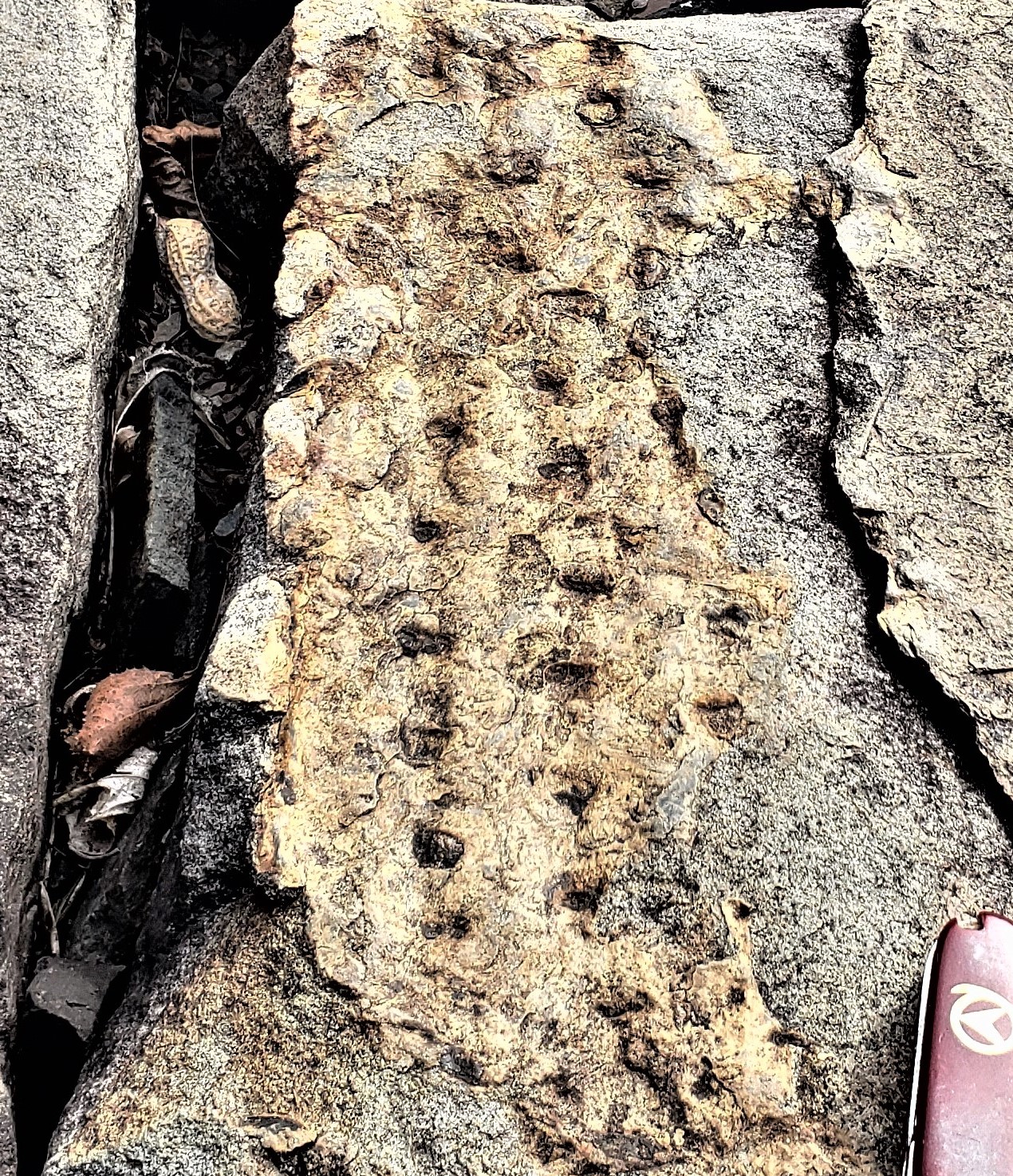THE CATSKILL GEOLOGISTS BY PROFESSORS ROBERT AND JOHANNA TITUS
Creepy Crawlers at Opus 40
When you are a geologist and are exploring a new location, you can expect to find something remarkable, even exciting things. That was the case with our visit to Opus 40. Take a look at our photo. That is one very eye-catching fossil. We think it is something called a trace fossil. It’s not the skeleton of an ancient animal; it is the evidence of an animal’s activity. We think this is the trail left behind by a critter walking across soft wet sediment on top of the Catskill Delta back in the Devonian time period, perhaps some 385 million years ago. Each dark dimple on the rock surface is the imprint of an animal’s appendage. There are a lot of them, and they are lined up in two rows. Which way was it going? Top to bottom or bottom to top. We can’t tell.
Well, maybe we don’t know which way it was going but what can we tell? How do we go about working on such a problem? What is it that we do when we find something like this? Let’ make this a column about scientific thinking. The first thing we do is to shoot lots of photos, trying to catch the sunlight from different angles. The gives us plenty of take-home evidence to work with. That’s important and it’s very helpful. Then we look again. We see those two lines of dimples. We are guessing that these are the left and right impressions of that critter’s feet (we scientists call them appendages) left behind as it walked along. That gives the animal bilateral symmetry, a left and a right. And that also gives it a front and a back, a head, and a tail. This is fine but it doesn’t do much to help narrow down the identification, does it?
So, then we rely on our experience. Over the years we have learned that there were some interesting candidate creatures that lived in the Devonian. Among them there were millipedes, big millipedes (you might know them as thousand leggers), on the Catskill Delta. Millipedes have sets of left and right appendages similar to what we see here. So, millipedes come to make up an interesting working hypothesis. We wrote about some of these recently. Did you read our Oct. 7, 2022 column? We liked the millipede hypothesis, so we googled “millipede tracks” and clicked on images. There, by accident were some photos of centipede tracks and those were very interesting. Centipedes (“hundred leggers”) are cousins of millipedes but have differently structured legs. Some of the appendage imprints we saw online were offset. That is that the left and right prints were not exactly parallel; instead, they zigzagged left to right. Sure enough, that’s ’what ours did. Take a look; do you see that?
As of today, that’s how far we have gotten with this. If we were doing serious peer review scientific research, we would dive into the issue of millipede and centipede locomotion. That might tell us a lot more and perhaps enough to solve the problem. But this project is only aimed at writing a Mountain Eagle column so that’s going to be it for today. You likely have seen both millipedes and centipedes, living ones. But look at our photo again and see the knife. There were big bugs, don’t you think! Contact the authors at randjtitus@prodigy.net. Join their Facebook page “The Catskill Geologist.” Read their blogs at “thecatskillgeologist.com.”

